In a bold move, Samsung has decided to forgo the Galaxy S11 moniker and jump straight to the S20. Perhaps it's marketing for the new 20:9 aspect ratio and 120 Hz display, or maybe it's just the fact that it's releasing in 2020.
Besides the number, Samsung is borrowing from Apple's playbook and making the budget model the base model. So what would have otherwise been the sequel to the S10e will get the title of Galaxy S20. Then there will be a larger version of that, akin to the S10+ from 2019, and that will have a name you'd expect: Galaxy S20+. The only other model of note is the S20 Ultra, but that's a whole different story.
Jump to a section: Standout Features | Dates | Storage | Price | Body | Basics | Software | Skin | Display | Performance | Battery | Front Camera | Rear Camera | Audio | Media Formats | Sensors | Connectivity | Security | Box Includes
Standout Features
The Galaxy S20 and S20+ are huge upgrade over 2019's Galaxy S10 series. Besides the usual SoC upgrade (Qualcomm Snapdragon 865), the new devices both use a new 64 MP telephoto lens capable of 3x optical zoom and 30x digital zoom. The primary lens is also getting an upgrade to a new 12 MP lens with a 1.8 µm sensor size. But it's not just the cameras — practically every spec has received a major upgrade this year.
Important Dates
The Samsung Galaxy S20 and S20+ were formally announced alongside the S20 Ultra on February 11, 2020, during the Samsung Unpacked 2020 event held in San Francisco, CA. The S20 and S20+ are available for preorder on February 21, 2020, with shipping starting on March 6, 2020.
- Release date: March 6, 2020
- Preorder date: Feb. 21, 2020
- Announcement date: Feb. 11, 2020
Storage Capacity
As far as internal storage goes, the Galaxy S20 and Galaxy S20+ both come in 128 GB, though the latter also can be had in 512 GB for those willing to pay more. Both devices provide microSD support up to 2 TB, and feature the UFS 3.0 standard, along with Samsung's F2FS for one of the fastest read and write speed of any smartphone.
- Storage available: 128 GB (S20/S20+), 512 GB (S20+ only)
- Specification: UFS 3.0
- Expandable storage: yes, up to 2 TB microSD card
Price for Everything
As flagship devices, both the S20 and S20+ aren't cheap by any means, but you were already expecting that. The Galaxy S20 comes in at $999, the same MSRP of the Galaxy S10+. The Galaxy S20+ retails for $1,199 for the 128 GB variant, plus $100 more if you want to go for the 512 GB model.
- Price: $999 (Galaxy S20), starting at $1,199 (Galaxy S20+)
Body
The Galaxy S20 and S20+ are available in three colors, with both having models finished in either Cosmic Gray or Cloud Blue. Beyond those two colors, Cloud Pink and Ceramic Black will be exclusive to the S20 and S20+, respectively. Both the S20 and S20+ feature Gorilla Glass 6 for their front and rear panels, and sport aluminum mid frames to minimize weight while maximizing durability.
- Frame: aluminum, glass (Gorilla Glass 6)
- Finish: Cloud Blue, Cosmic Gray, Cloud Pink (Galaxy S20), Ceramic Black (Galaxy S20+)
Basics
The Galaxy S20 is 5.97 x 2.72 inches, making it taller than the Galaxy S10e but not as wide. It has a similar thickness at 0.31 inches, despite it increase in battery size which pleasant surprise.
The Galaxy S20+, however, is a different story. With a length of 6.37 inches, it is taller than both the Galaxy S10 and S10+. The change is the result of both the new aspect ratio and the much larger display. Thanks to the aspect ratio, it is not as wide as the Galaxy 10+ (although it is wider than the Galaxy S10). And just like the Galaxy S20, its thickness remains the same 0.31 inches as its predecessor.
The only other feature Samsung users should be aware of is the increased weight. While Galaxy S20 is slightly heavier than the Galaxy S10e, the Galaxy S20+ is noticeably heavier at 6.56 oz (the Galaxy S10+ was 6.2 oz) so if you found any of the Galaxy S10 series too heavy, this won't be the phone for you.
- Height: 5.97 inches (Galaxy S20), 6.37 inches (Galaxy S20+)
- Width: 2.72 inches (Galaxy S20), 2.90 inches (Galaxy S20+)
- Depth: 0.31 inches
- Weight: 5.75 oz (Galaxy S20), 6.56 oz (Galaxy S20+)
- Dust/water resistance: IP68 under IEC standard 60529
- Supported carriers: Verizon, AT&T, T-Mobile, Sprint, US Cellular
- Infrared blaster: no
Software
With Samsung already releasing the stable version of Android 10 on Galaxy S10 and Note 10 devices, it's only natural that the S20 and S20+ will run on Android 10 out the box. Android 10 wasn't a big change visually (besides the new system-wide dark mode) but was still a major upgrade. Improved privacy and security, fast phone updates, and better music notification are just some of the changes Google added to the software. Check out the link below for all the changes.
- Version: Android 10
Skin
For Android 9 Pie, Samsung introduced a new skin, One UI. It replaced the previous Samsung Experience UI (which itself replaced TouchWiz) with a design more in line with stock Android.
Since the Galaxy S20 and S20+ will run Android 10 out of the box, it will run the next iteration of this skin, One UI 2.1. One UI 2.1 has all the features of One UI 2.0 but with the notable addition of Quick Share, a cloud-based AirDrop-like sharing feature for Samsung devices.
- Version: One UI 2.1
Display
Samsung increased the screen size of the entry model from 5.8 inches to 6.2 inches. However, for those who thought last year 6.4 inch Galaxy S10+ was perfect for media consumption, you are in for a treat — the Galaxy S20+ comes with a 6.7-inch display.
Both the S20 and S20+ have a new higher screen resolution of 3200 x 1440, and an aspect ratio of 20:9 that makes the display much taller than it is wider. Since each phone uses the same resolution, the pixel density is worse on the Galaxy S20+ at 521 ppi, while the Galaxy S20 has an astonishing 563 ppi. The panel is an upgrade version of the Dynamic AMOLED which has been relabeled AMOLED 2X. Both phones' display support HDR10+, and retain the now-familiar curves along the left and right edge.
Besides the larger display, the big upgrade over Galaxy S10 is the new 120 Hz display. 120 Hz refers to the refresh rate or the number of frames the display can display per second. 120 Hz is double the refresh rate of the Samsung Galaxy S10 which means the Galaxy S20 can generate twice the number of images. More generate images equal smoother animation, smoother scrolling, and better gaming (for games which support it). This is a huge win for Samsung as it one of only two US phones which has such a higher refresh rate and the only with QHD+ resolution.
- Screen size: 6.2 inches (Galaxy S20), 6.7 inches (Galaxy S20+)
- Screen resolution: 3200 x 1440 pixels
- Total pixels: 4,608,000 pixels
- Pixel density: 563 ppi (Galaxy S20), 521 ppi inches (Galaxy S20+)
- Screen type: Dynamic AMOLED 2X
- Notch: no
- Punch hole: yes
- Screen-to-body ratio: Unknown
- Aspect ratio: 20:9
- Minimum brightness: Unknown
- Maximum brightness: at least 600 nits
- Refresh rate: 120 Hz (120 Hz for touch-sensing)
- Color temp: Unknown
- Color gamut: Unknown
Performance
A new year means a new SoC from Qualcomm, and the Galaxy S20 and S20+ are the first Android flagships to arrive with the Snapdragon 865. This SoC offersr a 20% performance increase to CPU performance and a 17–20% increase in GPU. It uses the same core configuration, with one gold core clocked higher than three other gold cores, paired with four silver cores.
As far as RAM, Samsung believes more is better. The base entry for Galaxy S20 and S20+ is 12 GB, 4 more than last year Galaxy S10. Both phones use LPDDR5 RAM which achieves a great balance between power efficiency and fast transfer speed.
- Memory: 12 GB
- Processor: Qualcomm Snapdragon 865
- Chip size: 7 nanometer
- CPU frequency: 2.84 GHz (1x A77), 2.42 GHz (3x A77), and 1.8 GHz (4x A55)
- CPU cores: 8 cores (1 + 3 Gold Cores, 4 Silver Cores)
- GPU: Adreno 650
- GPU frequency: 587 MHz
Battery
So after years of treating battery life and charging as an afterthought (then giving us a huge battery but in exploding phone), Samsung has made a 180° change of directions, leading the charge in this category with the S20 and S20+.
Let start with the battery capacity. The Galaxy S20 has 4,000 mAh battery, 600 mAh larger than Galaxy S10e. The Galaxy S20+ increase its capacity from last year's huge 4,100 mAh to 4,500 mAh. This is tied for the largest battery of any Samsung's flagship, matching last year Galaxy Note10+. These battery capacities will do wonder when consider the screen size increase, the higher resolution of the Galaxy S20, and the new 120 Hz refresh rate.
Then there is the wired charging. Samsung introduces a new technology for its phones, Super Fast Charging 2.0, which debuted in the Galaxy Note 10+. This technology supports up 45 W chargers which you need to purchase separately. Instead, you are given a 25 W charger in the box that will have you up and running in no time. For wireless charging, both phones support Fast Wireless Charging 2.0 for up to 15 W (the fastest on any US phone). PowerShare, Samsung's name for reverse wireless charging, has also made a return.
Besides the hardware, Samsung has also introduced a new option in Settings showing the Battery Health. Think of this feature as the similarly named option in iOS devices added after Apple was called out for throttling devices when battery capacity reduced over time.
Front Camera
Both the S20 and S20+ use the Sony IMX374 10 MP front-facing camera with a pixel size of 1.22 µm. The punch hole will be the smallest yet, even smaller than the one included in the Note 10 series. And like the Note 10, the selfie shooters are located right on the center. The cameras also support video recording up to 4K at 60 fps, and uses Dual Pixel phase detection autofocus.
Samsung has a new feature called "Smart selfie angle" which detects the number of subjects in the frame and recommends switching to wide-angle mode if there are more than two people in the frame. This suggests the camera is wide-angle being cropped when a single person in the frame.
- Resolution: 10 MP
- Aperture: f/2.2
- Pixel Size: 1.22 µm
- Sensor Size: 1/3.2"
- Zoom: no
- Flash: yes, screen flash
- Image stabilization: no
- RAW support: yes
- Object detection: yes, face
- Formats: JPEG, RAW
Rear Camera
The Galaxy S20 and S20+ both come with a 12 MP Sony IMX555 lens. This sensor has a 1.8 µm pixel size, larger than previous models, which were 1.4 µm. The larger the pixel, the more light is captured, improving both image quality and low light performance.
Both phones are paired with a new 64 MP Samsung ISOCELL S5KGW2 lens capable of 3x optical zoom. We believe this is an upgrade to the Samsung ISOCELL S5KGW1, which was used in Galaxy A70s. This lens had a pixel size of 0.8 µm and a sensor size of 1/1.7". We expect both of these lenses will have OIS and EIS. The telephoto will not use pixel binning to reduce photos to 16 MP but rather use cropping to achieve the 3x optical zoom (similar to what OnePlus did last year with the 7 Pro). This is also the lens that makes 8K recording possible.
The ultrawide lens is the 12 MP Samsung ISOCELL S5K2LA. We don't know much about this camera, however, based on its model number, it appears to be an update to the ultrawide used in the Galaxy S10 series, which has a 1.4 µm pixel size and a 1/2.55" sensor size.
If you opt for the Galaxy S20+, you will also get ToF sensor. This sensor was used in Galaxy Note10+ to enable Depth Vision, there name for the improve depth detection this sensor provided. Because of this sensor, photos will be better on the larger phone as well as AR features such as AR Doodle, which will leverage the ToF sensor to better place objects in the world around you.
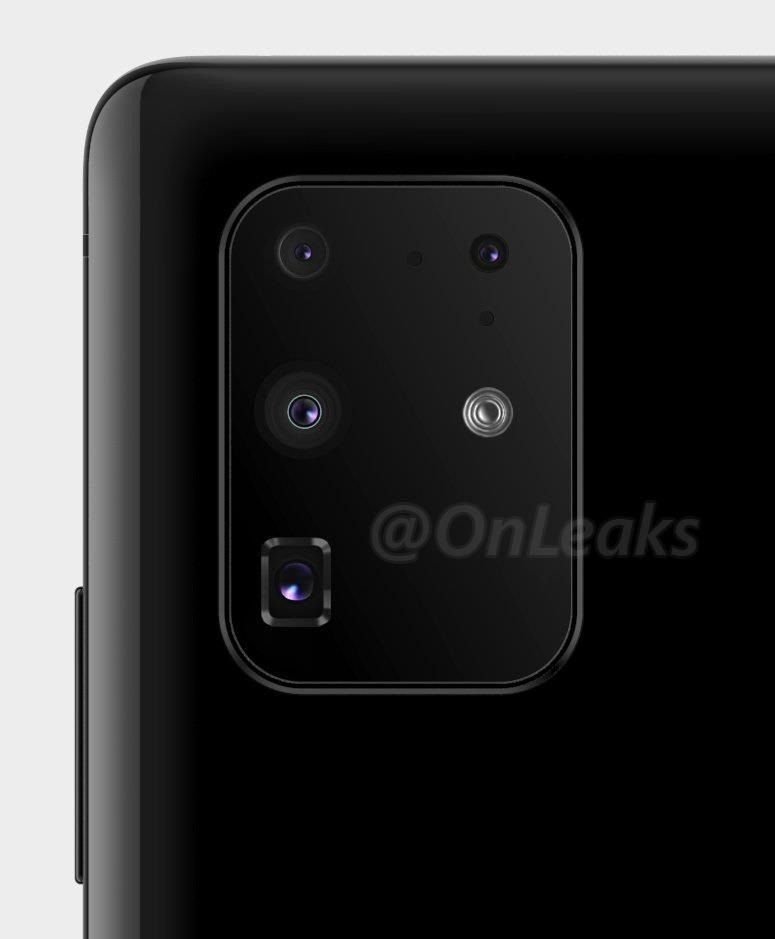
If these impressive camera hardware specs weren't impressive enough, the S20 and S20+ also comes with innovative features like Single Take Photo which lets you pan the phone around while it records several photos and videos, and recommends the best shots which you can choose to save. There's also new Live Focus effects, including Artify, Mono, Side light, and Vintage, plus a new Glitch effect for Live Focus Video. Zoom-in Audio will return (now apart of Android 10) and will be assisted by the microphone placed within the camera array.
- Resolution: 12 MP, 64 MP (telephoto), 12 MP (ultrawide), ToF (S20+)
- Pixel size: 1.4 µm, 0.8 µm (telephoto), 1.4 µm (ultrawide)
- Aperture: f/2.2, f/2.0 (telephoto), f/1.8 (ultrawide)
- Zoom: yes, 3x optical, 30x digital
- Flash: yes, High CRI LED
- Image stabilization: yes, OIS+ EIS (primary and telephoto)
- RAW support: yes
- Lens cover: sapphire crystal
- Object detection: yes, food, faces
- Formats: JPEG, RAW
Thanks to Qualcomm Snapdragon 865, the Galaxy S20 and S20+ also has the ability to capture 8K and HDR at 24 fps and 60 fps, respectively. The Note 10's Zoom-in mic functionality which directs audio to the subject of your zoom has also made a return.
The Galaxy S11 will come with a Video Pro mode.
"<string name="SM_PRO_VIDEO">Pro video</string>
<string name="SM_PRO_VIDEO_description">Take control of your videos. Set the exposure, shutter speed, color tone, and ISO sensitivity manually.</string>"
Another new feature is Director's View which lets you switch between different lenses while recording. Ideally, it will operate similarly to the iPhone 11 Pro which shares the imaging data between lenses so that while you switch lenses it appears to be from the same camera (only at different focal length). However, it appears this feature won't come at launch, instead, coming in a later software update.
- Resolution: 720p, 1080p, 4K, and 8K
- Max frame rate: 720p at 30fps, 1080p at 60 fps, 4K at 60 fps, 8K at 24 fps
- Slow motion: 720p at 960 fps, 1080p at 240 fps, 4K at 120 fps
- Time-lapse: yes, 1080p
- Photos: yes, higher than 9.1 MP still photos during 4K recording
- Zoom: yes, see above
- Flash access: yes, see above
- Image stabilization: yes, VDIS (video digital image stabilization)
- Object detection: Unknown
- Autofocus: Unknown
- Audio: stereo
- Formats: H.264 (AVC), H.265 (HEVC)
Audio
Neither device retains the headphone jack (R.I.P). Samsung was one of the last OEMs to offer the port, limits your options to ASUS flagships, LG flagships, and midranges (or lower) devices. And to make matters worse, a headphone adapter won't be included in the box. So if you plan on getting either the S20 or S20+ and you don't have one, we recommended picking up an adapter now from Amazon. You can get the official one from Samsung ($14.99 on Amazon) or upgrade to a third-party option such as Soditer headphone adapter ($26.99 on Amazon) which lets you output 32 bit/384 kHz audio files.
Both the S20 and S20+ feature AKG-tuned stereo speakers with Dolby Atmos support. The new Music Share feature is also worth noting, as it lets you easily connect with other smartphones and share your Bluetooth connections to accessories like speakers and eliminate the need to unpair your device.
- 3.5 mm headphone jack: no
- Stereo speakers: yes, top firing and bottom-firing
- Mics: 3
- Max speaker volume: Unknown
Media Formats
There hasn't been any changes in media format support. That said, the S20 and S20+ supports the following for audio and video:
- Audio: MP3, M4A, 3GA, AAC, OGG, OGA, WAV, WMA, AMR, AWB, FLAC, MID, MIDI, XMF, MXMF, IMY, RTTTL, RTX, OTA, APE, DSF, DFF
- Video: MP4, M4V, 3GP, 3G2, WMV, ASF, AVI, FLV, MKV, WEBM
Sensors
All the usual sensors that came with the S10 have carried over to the S20 and S20+. Besides the ultrasonic fingerprint sensor, the S20 and S20+ also features the following:
- Accelerometer
- RGB Ambient Light Sensor
- Barometer
- Gyro sensor
- Geomagnetic sensor
- Hall sensor
- HR sensor
- Proximity sensor
With the Galaxy Note 10+ supporting dual-frequency as well, we expect Samsung to bring this same feature to the Galaxy S20 series.
- GPS: yes, L1 + L5
- aGPS: yes
- Glonass: yes, L1
- BeiDou: yes, B1
- Galileo: yes, E1 + E5a
- QZSS: no
Connectivity
Nothing has changed much with the S20 and S20+ with regards to connectivity — both handsets provide Wi-Fi 6 support, and use 5.1 which includes a few small changes such as lower power Bluetooth connection initiation (that is also faster) and improve the ability to determine your location.
- Wi-Fi: 802.11 a/b/g/n/ac/ax
- Bluetooth: 5.1
- NFC: yes
- Cellular: nano-SIM
- Port: USB Type-C
Now that Qualcomm is forcing manufacturers to buy its 5G modem on top of its Snapdragon 865 SoC, both the stateside variants of the S20 and S20+ will only be available with 5G support.
- GSM: 850/1900
- UMTS: 850/1700/1900
- CDMA: BC0, BC10
- LTE Bands: 2/4/5/7/12/13/14/25/26/30/38/41/48/66/71
- 5G Non-Standalone (NSA), Sub6 / mmWave
Security
Despite reports that in-display fingerprint scanner wasn't very secure, Samsung has stuck the in-display fingerprint scanner as its biometric security feature of choice for both the Galaxy S20 and S20+. Beyond that, both flagships also comes standard with all other Android authentication methods like PIN and password unlock to keep your device as secure as possible.
- Fingerprint scanner: yes, in-display
- Face scanner: yes
- Iris scanner: no
- Manual authentication: password, PIN, pattern, swipe
Box Includes
The Galaxy S20 and S20+ comes with all the usual accessories and paperwork, which includes a 25 W Super Fast Charging adapter, USB-C cable, AKG-tuned earbuds with a USB-C connector, along with the quick start guide and other paperwork. Conveniently, both the S20 and S20+ will also come with a clear cover and screen protector right out of the box.
- Samsung Galaxy S20 or S20+
- Samsung USB Type-C Cable
- Samsung Power Adapter (25W)
- AKG USB-C Earbuds
- SIM Tray Ejector
- Welcome Letter
- Quick Start Guide
- Safety Information
- Clear Cover
- Protective Film
Who needs a wand? Unlock your magical powers and transform yourself from a Muggle into a Wizard or Witch just by using your Android phone. See how:
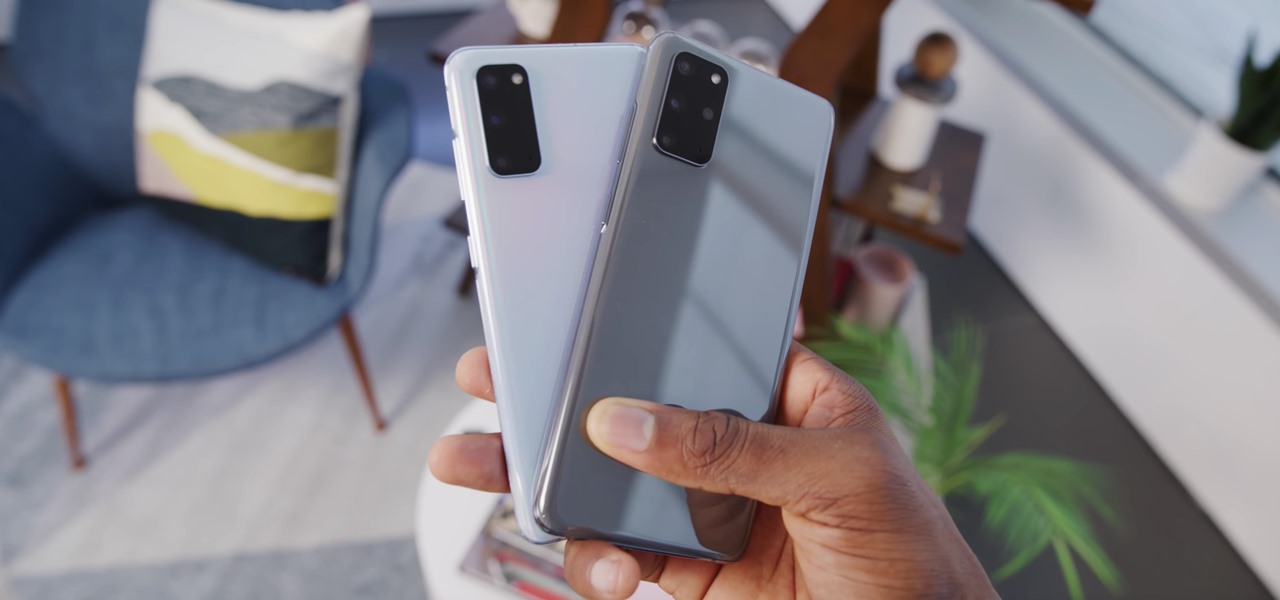






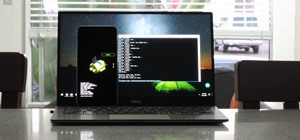
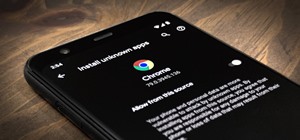




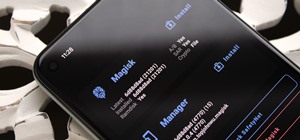



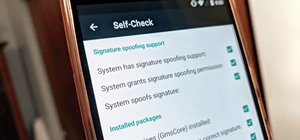


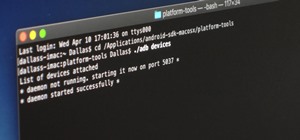

Be the First to Comment
Share Your Thoughts